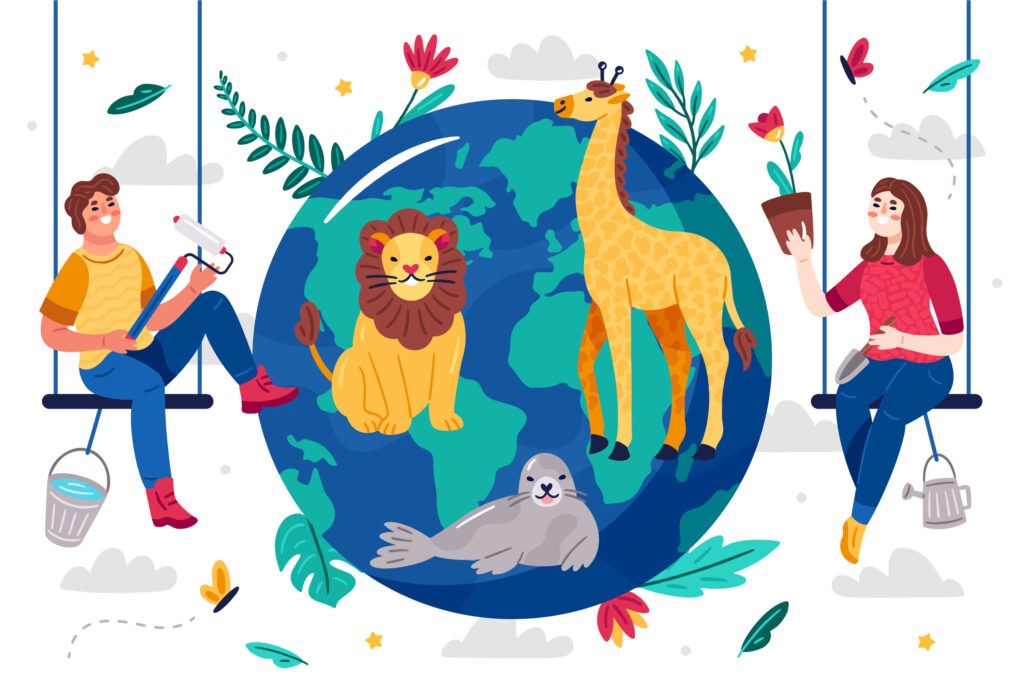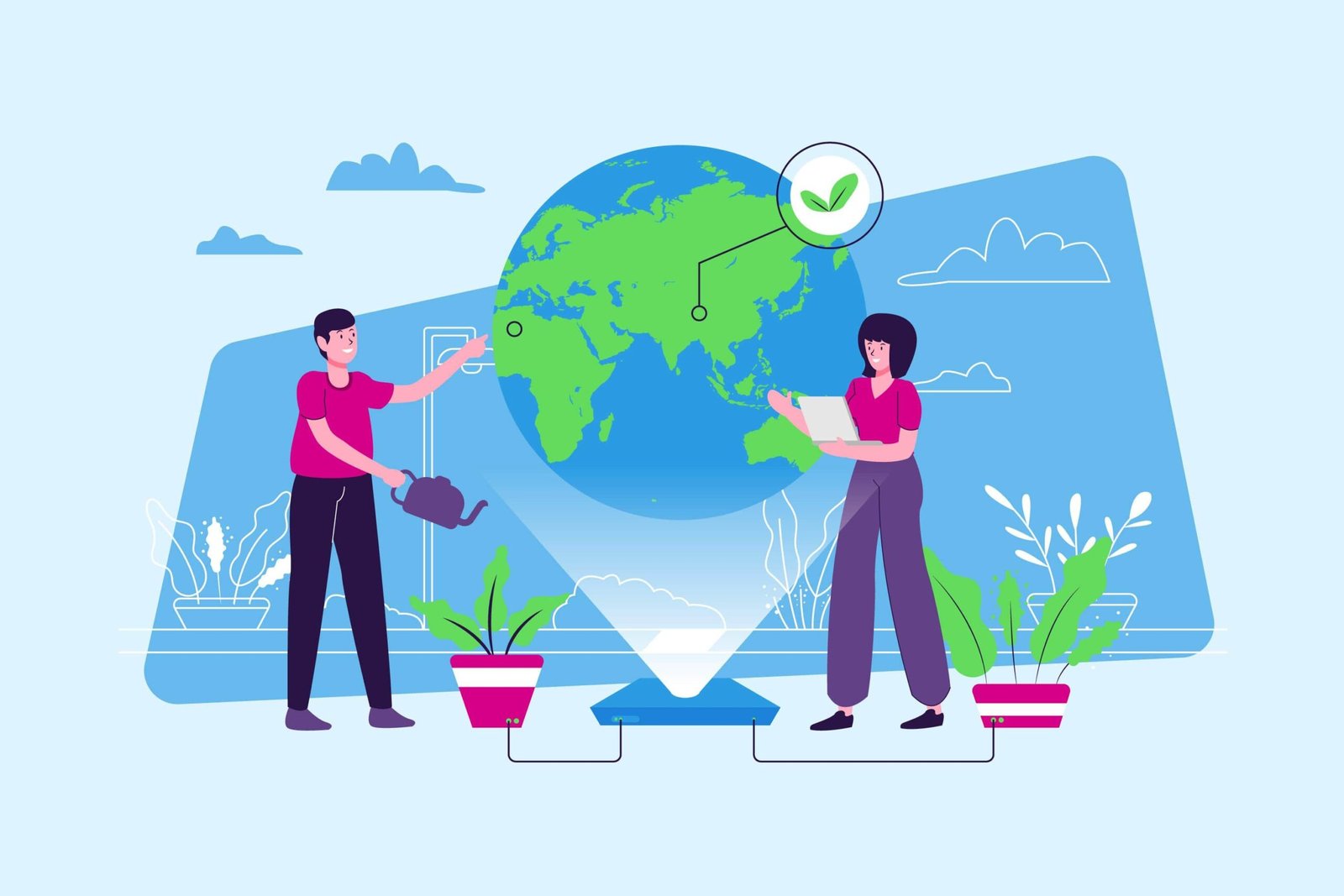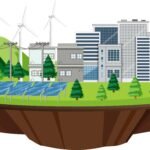Since the beginning of civilization, human and environment have been engaged in a complex dance. The interaction between humans and their environment has affected the course of human history and the destiny of our planet, from the first hunter-gatherer tribes to the vast urban landscapes of today. We explore the subtleties of this dynamic interaction in this investigation, looking at its potential for sustainability and harmony as well as its obstacles.
We must first look at how human and environment interaction has changed throughout millennia in order to comprehend its current status. Our predecessors relied on the land for food and shelter in the early phases of human history, living in intimate harmony with the natural world. But as populations increased and civilizations emerged, the delicate balance between human demands and natural resources grew more and more stressed.
An important turning point in this connection occurred during the Agricultural Revolution, when people moved from nomadic to permanent agricultural communities. Food production and population growth increased as a result, but widespread deforestation, degraded soil, and biodiversity loss also resulted.
Because of the extensive use of fossil fuels and the mechanization of industry, the Industrial Revolution further increased human effect on the environment and resulted in pollution, habitat destruction, and climate change. Humanity has frequently neglected to consider the long-term effects of its actions on the natural environment in its pursuit of advancement and economic prosperity.
Challenges of Human Impact
We now deal with a wide range of environmental issues brought on by human activity. Global ecosystems are at danger of losing their delicate balance due to factors like pollution, deforestation, climate change, biodiversity loss, and resource depletion. These issues have far-reaching effects on everything from local communities’ health and well-being to global weather patterns

Human and Environment are Climate change, which is mostly caused by the combustion of fossil fuels and deforestation, is one of the most urgent problems. Extreme weather, sea level rise, and rising temperatures are already having catastrophic repercussions on natural and human systems. In order to reduce greenhouse gas emissions and prepare for climate change, immediate action is required.
Large tracts of forest are being removed for logging, urban development, and agricultural, which is another serious problem. This not only causes the destruction of several species’ essential habitats, but it also accelerates climate change by releasing stored carbon into the sky. In order to preserve the few remaining forests and repair damaged landscapes, conservation initiatives and sustainable land management techniques are crucial.
All forms of pollution—air, water, or soil—present serious dangers to both ecosystems and human health. Pollution transcends national boundaries and necessitates coordinated actions at the local, national, and international levels to mitigate, ranging from industrial emissions to plastic garbage in the oceans.
Overexploitation, invasive species, and habitat destruction are the main causes of the silent crisis of biodiversity loss that the world is experiencing. The loss of species undermines ecosystem stability and functions like pollination, soil fertility, and temperature regulation, in addition to reducing the diversity of our natural environment.

Opportunities for Positive Change
Even while the obstacles we must overcome are formidable, there are still chances for our connection with the environment to improve. People, groups, companies, and governments are acting to advance sustainability, preserve resources, and safeguard ecosystems all throughout the world.
Technological developments present viable answers to numerous environmental issues, ranging from creative waste management schemes and sustainable farming methods to clean energy sources like solar and wind power. We can move toward a more resilient and sustainable society by utilizing innovation and funding research and development.
Instilling constructive change also requires the use of awareness and education. People can be empowered to make informed decisions and take action to safeguard the environment by learning about the value of biodiversity, conservation, and sustainable living. Action can be sparked and awareness raised at all societal levels by undertaking projects like media campaigns, community outreach programs, and school-based environmental education programs.
Moreover, confronting the world’s environmental problems requires teamwork and collaboration. These issues are too big for any one nation or group to handle on their own. To make significant progress, collaboration and cross-sectoral alliances are needed. Frameworks for collaboration and coordination on common environmental objectives are provided by international accords such as the Convention on Biological Diversity and the Paris Agreement on climate change.
Conclusion
Millennia of contact and evolution have produced the intricate and multidimensional relationship between humans and the environment. Even though the natural world has frequently suffered as a result of human activity, a more sustainable future is yet possible. We may create a harmonious relationship with the environment that benefits both the present and the future generations by acknowledging the difficulties we confront, seizing the chance for good change, and cooperating to achieve common objectives.












I like this weblog it’s a master piece! Glad I discovered this ohttps://69v.topn google.Leadership